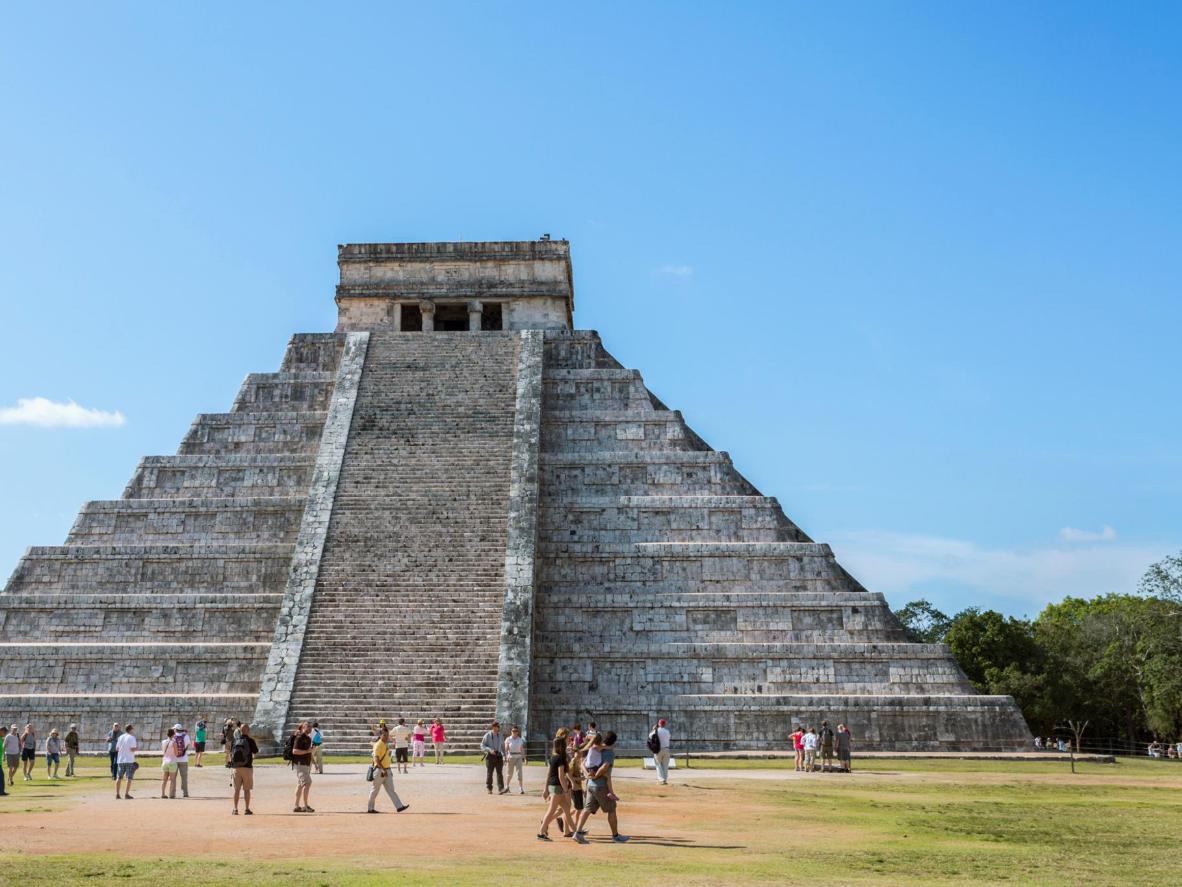Palenque, Mexico

Mayan temple, Palenque, Mexico
The city-state of Palenque rose, fell, and then was lost to the jungle for almost a thousand years before its rediscovery in the 1500s. Humid air hangs heavy around the crumbling temples and palaces where Mayan rulers once reigned. Get there at dawn to see the sun rise over mist-shrouded ruins, with the eerie call of howler monkeys as a soundtrack. Hotel la Aldea del Halach Huinic is conveniently close by, with air-conditioned rooms and an outdoor pool.
Tulum, Mexico

In Tulum, Mayan watchtowers overlook the Caribbean Sea
The Caribbean beach fortress of Tulum played the role of a major Mayan port for trading in textiles, obsidian, and jade. Today iguanas roam its dusty trails and sun-baked temples, while turquoise waves crash against the cliffs below. Bring your towel and go for a swim at the tiny beach hidden within the ruins. Once you’re done, Villa Pescadores is just a 5-minute walk away, with thatched cabañas set right on a private stretch of soft, white sand.
Valladolid, Mexico

El Castillo pyramid, Valladolid, Mexico
At its peak, the ancient Mayan city of Chichén Itzá was home to 30,000 people. Today its ruins draw about 1.2 million visitors per year. In the center of the complex sits El Castillo pyramid, a towering limestone tribute to the god Kukulkán. During the spring and autumn equinoxes, crowds gather to see the sun cast a shadow illusion of a snake creeping down the pyramid's steps. The nearby city of Valladolid makes for a handy base to explore the ancient city. Cool off at the Hotel Mesón del Marqués, a 17th-century mansion with a garden and pool.
Mexico City, Mexico

The ruins of the Aztec Templo Mayor sit alongside Mexico City Cathedral
This modern megacity was built on top of the conquered Aztec capital, Tenochtitlan. Its pre-Hispanic past was all but forgotten until the 1970s, when excavations unearthed the ruins of the main temple next to the city's Zócalo Square. Hotel Histórico Central is just a few blocks from the Templo Mayor Museum. A short drive north of Mexico City lies Teotihuacán, which the Aztecs dubbed the “birthplace of the gods.” Visitors can still scale its Sun and Moon Pyramids and walk the Avenue of the Dead that links them.
Mérida, Mexico

Uxmal’s ancient ruins, Mérida, Mexico
The colonial city of Mérida is the Yucatán region’s cultural capital. In its northern suburbs, the Gran Museo del Mundo Maya houses a vast collection of Mayan art, crafts, and historical relics. An hour’s drive south is the Uxmal archaeological site, a huge complex of smooth-faced pyramids and ornately-carved temples – many of which you can still climb. After a day exploring the ruins, the shady courtyards and outdoor pool at Hotel Caribe Mérida Yucatán provide a break from the heat.
Oaxaca, Mexico

Monte Alban, Oaxaca, Mexico
Set high on a hilltop plateau, Monte Albán was once the capital of the Zapotec empire. This ancient civilization ruled over the Valley of Oaxaca, filling the fortified city with stepped pyramids, ball courts, and hundreds of contorted, stone figures known as “danzantes.” Down on the parched valley floor, the archaeological site of Mitla was the region's spiritual center. Look out for eagles circling overhead as you explore its low, angular temples and geometric designs. Back in town, sleep in a converted 15th-century building, Quinta Real Oaxaca.
Feel grounded in yourself and in nature at the One&Only Spa, with a range of treatments designed to help you unwind and connect with movements of the rainforest.
Book your stay via the Partner links below.

